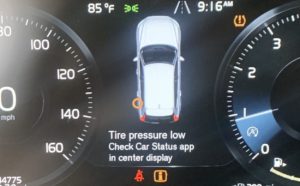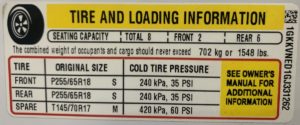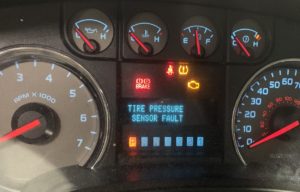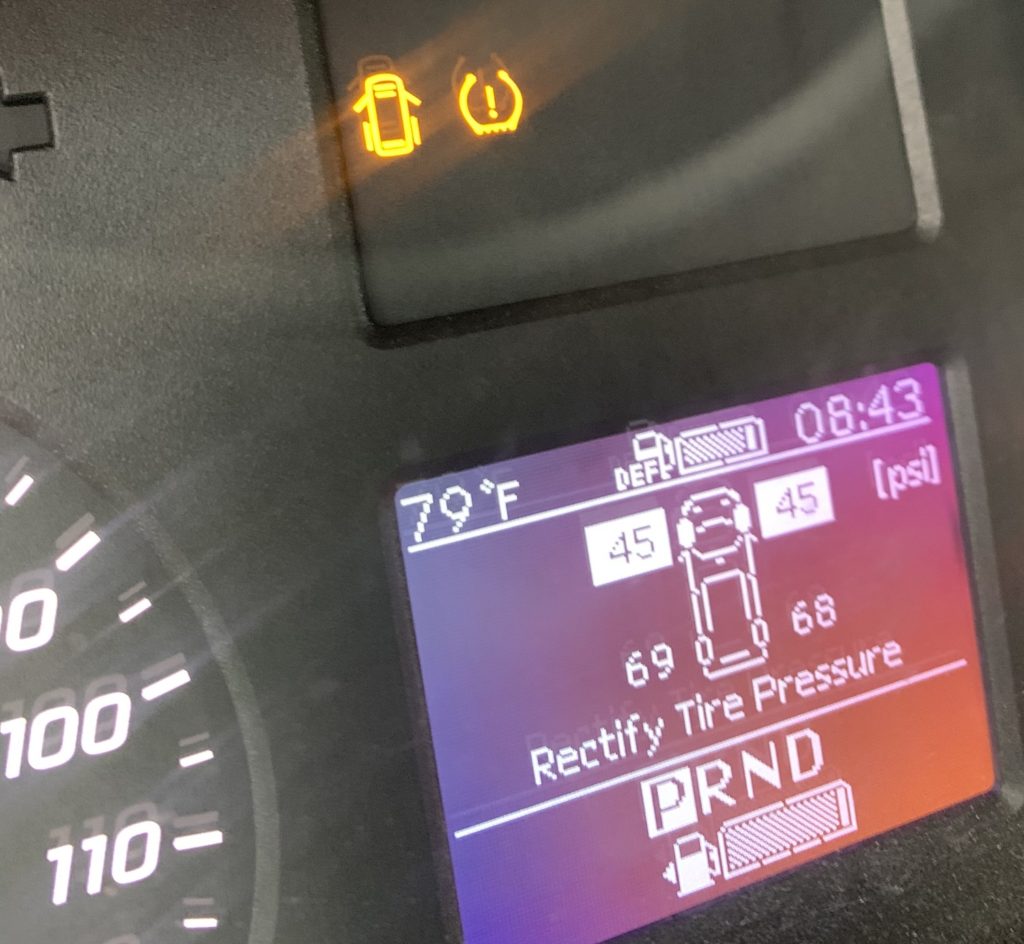What Does a Flashing TPMS Light Mean?
 If the tire pressure light on your dashboard is flashing, it means that there is a problem with your tire pressure monitoring system (TPMS). Several reasons could cause this, such as a faulty TPMS sensor, low air pressure in one or more tires, or an issue with the TPMS control unit.
If the tire pressure light on your dashboard is flashing, it means that there is a problem with your tire pressure monitoring system (TPMS). Several reasons could cause this, such as a faulty TPMS sensor, low air pressure in one or more tires, or an issue with the TPMS control unit.
It’s important to address this issue as soon as possible, as low tire pressure can lead to a number of problems, including poor fuel efficiency, decreased handling, and increased tire wear. In extreme cases, low tire pressure can even cause a tire to fail, which can be a disaster.
What Should You Do If Your TPMS Light is Flashing?
 If your tire pressure light is flashing, the first thing you should do is check the tire pressure in all four tires. Ensure that the tires are properly inflated to the suggested level, as this can be found either on a sticker inside the driver’s side door or your car’s manual. (usually in the glove box) If the tire pressure is too low, fill the tires to the required level and see if the light is still illuminated or flashing. If the tire pressure is correct and the light is still flashing, there may be an issue with one or more of the TPMS sensors. In this case, we recommend bringing the vehicle to a mechanic.
If your tire pressure light is flashing, the first thing you should do is check the tire pressure in all four tires. Ensure that the tires are properly inflated to the suggested level, as this can be found either on a sticker inside the driver’s side door or your car’s manual. (usually in the glove box) If the tire pressure is too low, fill the tires to the required level and see if the light is still illuminated or flashing. If the tire pressure is correct and the light is still flashing, there may be an issue with one or more of the TPMS sensors. In this case, we recommend bringing the vehicle to a mechanic.
How To Check A Flashing TPMS Light
 When a vehicle with a flashing TPMS light is looked at by a mechanic, the first thing they should do is check all 4 tires. (and the spare) Next they will manually check to see if there is a TPMS reset procedure for that specific vehicle. Vehicles with Direct TPMS have sensors in each wheel. Vehicles that use indirect tire pressure monitoring systems, rely on the ABS system’s wheel speed sensors to determine if tire pressures are low or not. Depending on if the vehicle has Direct TPMS or Indirect TPMS, the mechanic will verify if each wheel’s sensor is functioning or at fault. (to learn more about the type of TPMS read here) To do so, the mechanic will use a TPMS tool like this, and go from wheel to wheel with the tool to check if each sensor is functioning properly. If the mechanic finds a faulty TPMS sensor, (usually for poor battery) they will likely let you know that a sensor needs to be replaced.
When a vehicle with a flashing TPMS light is looked at by a mechanic, the first thing they should do is check all 4 tires. (and the spare) Next they will manually check to see if there is a TPMS reset procedure for that specific vehicle. Vehicles with Direct TPMS have sensors in each wheel. Vehicles that use indirect tire pressure monitoring systems, rely on the ABS system’s wheel speed sensors to determine if tire pressures are low or not. Depending on if the vehicle has Direct TPMS or Indirect TPMS, the mechanic will verify if each wheel’s sensor is functioning or at fault. (to learn more about the type of TPMS read here) To do so, the mechanic will use a TPMS tool like this, and go from wheel to wheel with the tool to check if each sensor is functioning properly. If the mechanic finds a faulty TPMS sensor, (usually for poor battery) they will likely let you know that a sensor needs to be replaced.
How Is A Faulty TPMS Sensor Fixed / Replaced
 The wheel will need to be removed from the vehicle. Next the tire will be broken down and removed from the wheel. Once the tire is removed, the faulty sensor can be removed and replaced with a brand new one. After the tire has been re-mounted, the mechanic will need to program the new TPMS sensor to the vehicle. This is done using a TPMS tool like this. (same tool used to check for faulty TPMS sensor). Once the new TPMS sensor is programmed to the vehicle, the mechanic will go around the vehicle to verify each sensor is working properly and double check tire pressure.
The wheel will need to be removed from the vehicle. Next the tire will be broken down and removed from the wheel. Once the tire is removed, the faulty sensor can be removed and replaced with a brand new one. After the tire has been re-mounted, the mechanic will need to program the new TPMS sensor to the vehicle. This is done using a TPMS tool like this. (same tool used to check for faulty TPMS sensor). Once the new TPMS sensor is programmed to the vehicle, the mechanic will go around the vehicle to verify each sensor is working properly and double check tire pressure.
It’s worth noting that some vehicles have a “TPMS reset” button that allows you to reset the system if you have recently replaced a tire or adjusted the tire pressure. If your vehicle has this button, you may be able to reset the TPMS by pressing the button and following the manufacturer’s instructions. Remember: If your TPMS light is flashing, you most likely have a faculty sensor. Using the TPMS reset button will not fix a faulty sensor issue. (Here is an example of a Honda with TPMS reset button)
In conclusion, if your TPMS light is flashing it means that there might be an issue with one or more of the sensors. It’s important to address this as soon as possible in order to avoid any further problems. You can check the tire pressure yourself and fill them up accordingly, but if you have a faulty sensor then we recommend bringing your vehicle to a mechanic for assistance. The mechanic will use a TPMS tool and go from wheel to wheel to check each sensor before replacing any faulty ones. If your car has a “TPMS reset button” follow the manufacturer’s instructions on how to reset it properly. By following these steps, you should be able to fix the problem quickly and safely!






